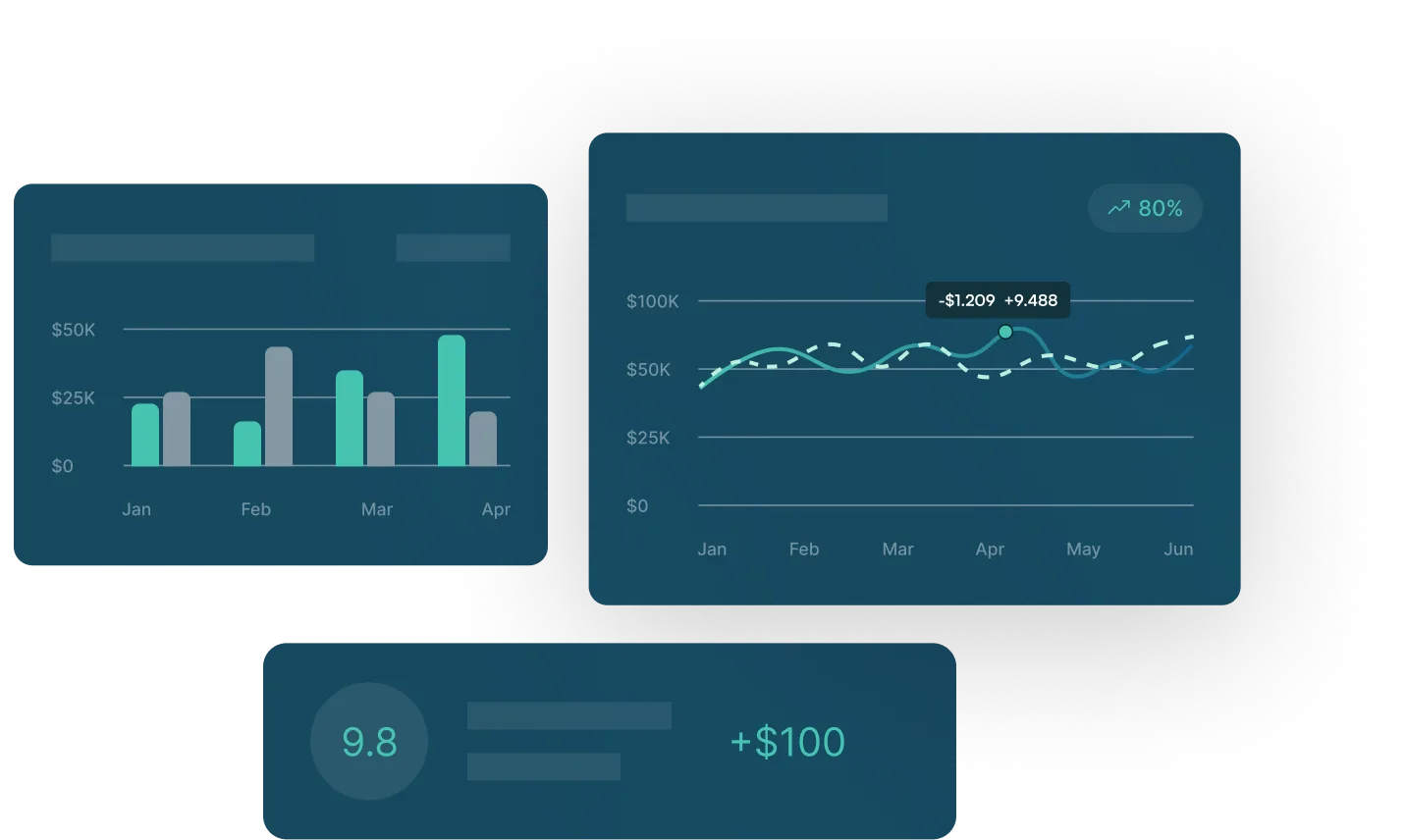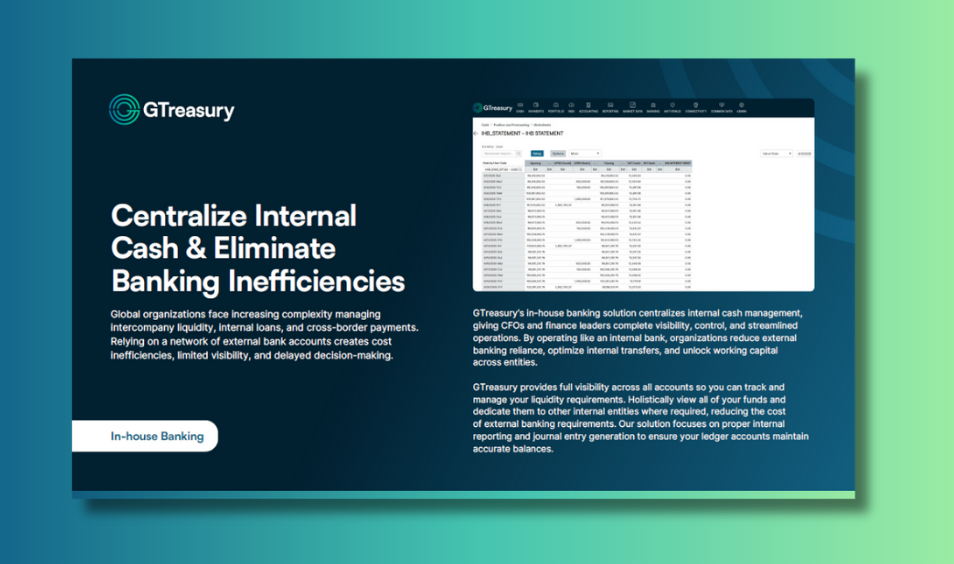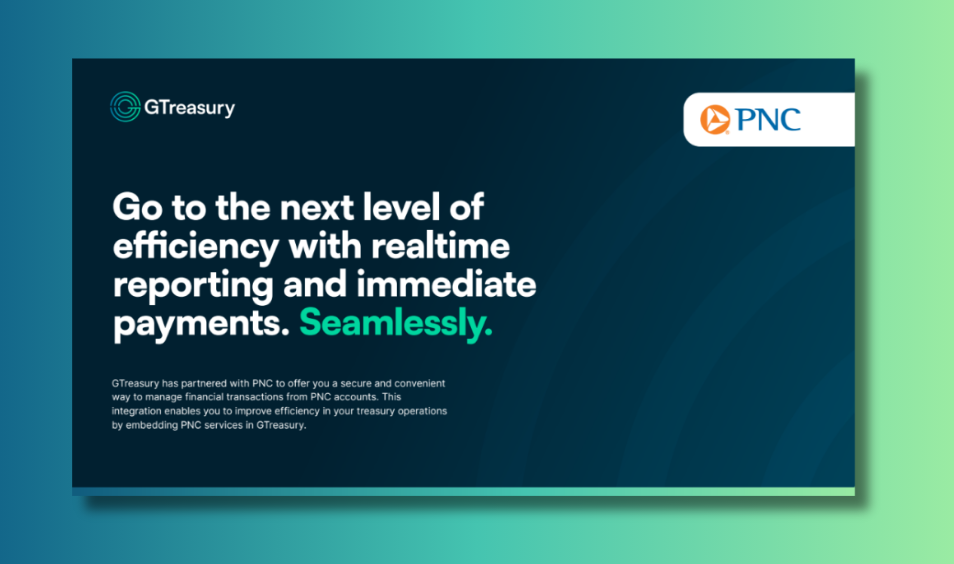Cash Flow Forecasting
The Precision to Forecast, the Clarity to Take Control
Confidently make informed decisions with organizational impact based on cash positions easily derived from real-time transactional data aggregated from any bank, ERP, and other external sources.

Automate Your Cash Flow Forecasting & Get Clearer Cash Visibility

Save Hours of Manual Work Every Week
Get rid of your monster cash flow models and save hours of manual work with a streamlined cash forecasting solution.

Create Reliable & Accurate Cash Forecasts
The accuracy and reliability of your cash forecasts will improve dramatically with a robust and scalable system in place.

Gain Clearer & Deeper Cash Flow Visibility
Gain a deeper understanding of cash across your entire business with the data you need at your fingertips.
How Cash Flow Forecasting in GTreasury Works
GTreasury Cash Flow Forecasting (formerly CashAnalytics) takes the best parts of a spreadsheet and combines them with a system to give you a truly unique way to create and manage your cash forecasts. Connect seamlessly to banks and ERP systems, quickly model data, drill down to transaction and customer level detail, and quickly get the cash visibility you need through a suite of reports and dashboards.
AI-Amplified Cash Flow Management
Smarter Forecasting with AI Insights
GSmart Forecast Insights uses AI to streamline variance analysis by automatically comparing forecasted cash flows to actuals. The solution’s generative AI Insight Agent highlights data patterns and outliers, providing clear, actionable insights. It enhances forecast accuracy, reduces manual workloads, and features proactive notifications for unusual variances. Interactive dashboards allow users to easily break down deviations by driver, improving overall forecasting efficiency.

real-time data integration for smarter forecasting
Connect Directly to ERPs and Banks

GTreasury Cash Flow Forecasting connects directly with ERPs and banks to streamline the capture of transactional data on a daily basis.

Cash flow data captured from banks is automatically categorized and posted to your cash flow forecast model in real-time.

AP and AR data from your ERP, in combination with machine learning, is used to create detailed short to medium term forecasts.
adapt your cash forecasts to fit your needs
Flexible & Customizable Cash Forecast Models

Customize cash flow models to meet your exact requirements using your cash flow categories, sub-totals, and reporting calendar.

Manage multiple business units/reporting entities and multiple currencies through a single cash flow model.

Quickly and easily update and change your forecast models as time rolls by. CashAnalytics grows with your business.


actionable cash flow insights for smarter decisions
Get Reliable, Actionable Cash Insights

All the data and insight you need to efficiently manage cash in your business is available in one place.

Quickly go from a high-level summary of cash to transactional-level detail through a suite of dashboards and reports.

Forecasts, reports, and cash flow data can be easily exported from the system and shared with other people.
track and improve forecast accuracy with variance insights
Perform Detailed Variance & Accuracy Analysis

Forecast variance analysis is easy with actual and forecasted cash data managed in the same model.

This allows you and your colleagues to quickly understand what is impacting forecast accuracy and answer questions as they arise.

Variance performance analysis highlights accuracy trends, facilitating continuous improvements in forecast accuracy.


advanced cash Flow forecasting for business growth
Feature-Rich Cash Forecasting Solution
GTreasury Cash Flow Forecasting is the most comprehensive cash forecasting solution available on the market today. It has a deep level of functionality designed to meet the requirements of mid-market companies who need cash flow visibility to thrive and grow.

Track intercompany movementbetween business units

Actual and forecast transaction drill down

Easy to use excel like interface

Multi-business unit consolidation reporting

Detailed variance and accuracy analysis

Easily translate budgets into details cash flow
gain insights into automated cash Flow forecasting
Learn How to Automate Cash Flow Forecasting and Optimize Working Capital with GTreasury
Download this comprehensive overview today.

See GTreasury in Action
Get connected with supportive experts, comprehensive solutions, and untapped possibility today.















































.jpg)
.png)


























.png)




.jpeg)

.jpeg)











.jpeg)


.jpeg)







.jpeg)


.jpeg)









.jpeg)
















